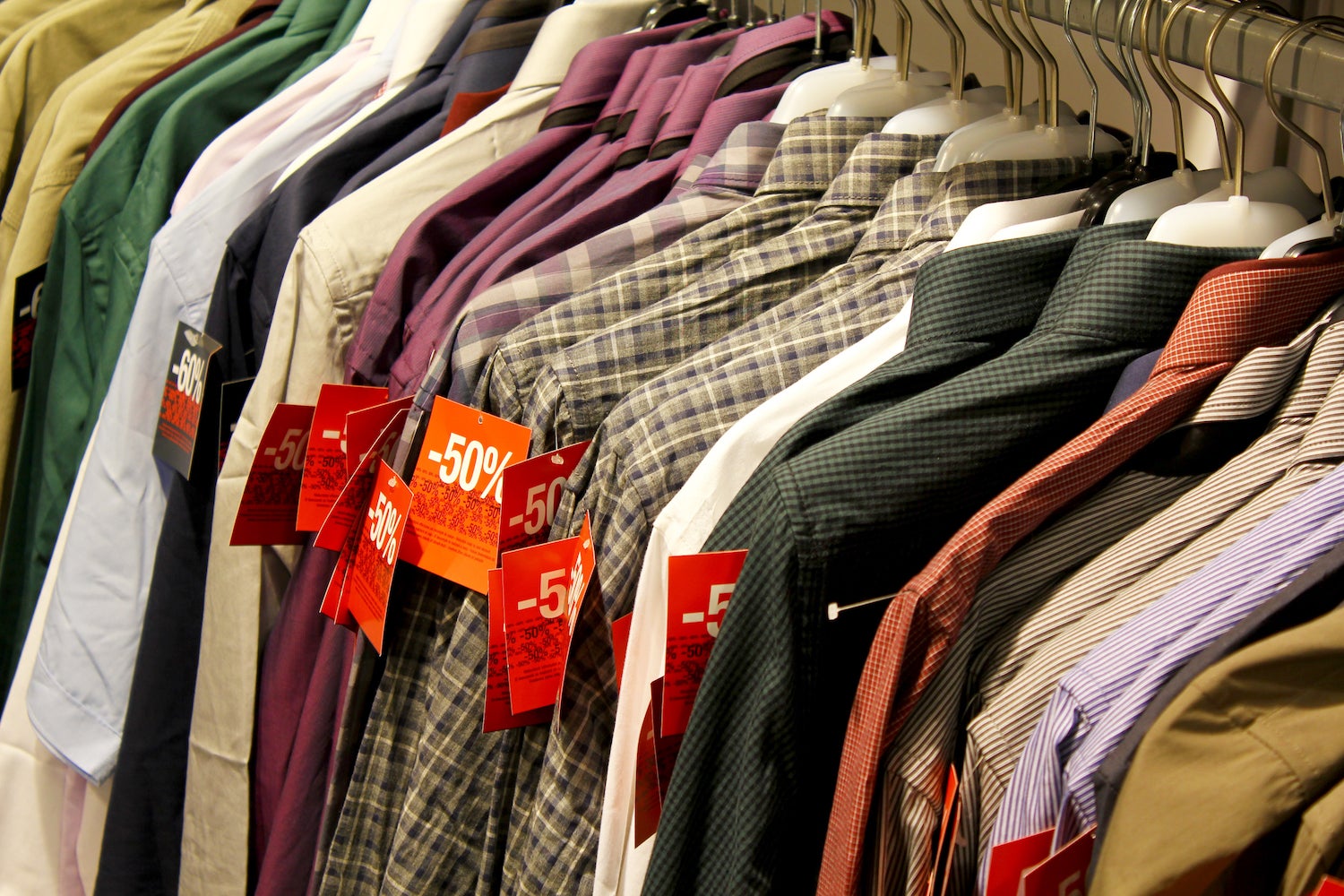Hey team, and welcome back to one5c! Buying stuff is pretty much unavoidable, particularly when it comes to clothes and other textiles. Leggings rip, pillows deflate, shoes get holey, and puppies munch on your favorite sweater. But that doesn’t mean we can’t be more climate-conscious about the duds we buy. When it comes to our closets that means a lot of things—from not giving in to the temptation to snag that trendy cut of jeans to knowing the hallmarks of the cheap, planet-warming, and ethically spine-shivering world of fast fashion.
So, over the next few months, we’re digging into everything you need to know about what taking a truly sustainable approach to fashion looks like. First up, giving up fast fashion. Put down the credit card, and let’s get started. —Sara Kiley
HOW TO AVOID FAST FASHION
By Sophie Benson

Americans spend about half as much on clothing as they did in the 1990s, yet we own more than we ever have, buying an average of 53 new items each year. This is only possible due to the explosion of fast fashion—trendy duds that are produced quickly for prices as low as possible. This clothing machine has a range of negative impacts on the planet, and the best thing any individual can do to slow that roll is to not buy it at all.
But this might not always be so easy. Brands often wash their wares with slogans like “planet-friendly” or “conscious,” or even launch dedicated “sustainable” collections, but the real clues are in how they operate—not what they say. That’s why if you’re trying to avoid the lure of cheap yet harmful trends and styles, you have to first get savvy about spotting the signs.
The first step is to make yourself aware of the most common culprits, like Boohoo, H&M, Fashion Nova, Brandy Melville, Shein, and Temu. There are a lot of ’em out there, so lists like these from Good On You and Commons Earth are good places to start. A lot of these labels often try to tick the box for sustainability by publicizing programs like tree planting or the use of “better” materials, but they don’t tackle where the real harms lie: the volume of clothes they manufacture, the message of overconsumption they promote, and the waste they create.
4 hallmarks of fast fashion brands
Shockingly low prices. When a quickie clothing brand puts duds on sale, they really go on sale. Heavily discounted promotions are a major marker of fast fashion; some brands have even been known to offer 100% discounts just to clear out their warehouses. Even regular-priced goods are too-cheap-to-be-true. Consider, for example, that industry analysis has put the fair price of a T-shirt at around $30.
False urgency. Fast fashion sellers put constant pressure on customers to try new trends. Their ads and promotions aim to create a false sense of urgency by using phrases such as “must-have” and “get it or regret it.”
A constant churn of new trends and wares. Many fast fashion brands release new styles every day. The rate at which they hop on trends or viral products is a major red flag. The clothing machine can get copies of trending styles or high-end designs ready to buy in a matter of days or weeks after they first become popular.
Shoddy materials. To put it bluntly, fast fashion most-often looks as cheap as it is. Speedily made garments are often sewn entirely from synthetic materials like polyester and generally lack any “excess” details such as linings, fastenings, and pockets—all of which can drive up the price of manufacturing. These garments are also often poorly fitted and lack consistency; if you see differences between two sweaters or jackets in the store, that’s a common sign of too-swift work.
Of course, knowing what not to buy is only half the picture. Keep reading to learn what to do—where to shop, who to trust—when looking for fresh duds.
Sophie Benson is a freelance journalist working with a focus on sustainable fashion, the environment, workers’ rights, and consumerism. Her work has been featured in Vogue Business, The Guardian, Atmos, Dazed, and more.
THE ROUNDUP
IN THE NEWS THIS WEEK
TikTok and Climeworks have announced plans to remove 5,100 tons of carbon dioxide from the atmosphere by 2030 via methods like carbon capture and reforestation. The only issue? That’s only an impossibly small fraction of the emissions the app generates each year.
Manufacturing sites are increasingly getting their electricity from heat pumps, according to a new report from the American Council for an Energy-Efficient Economy. The industries most likely to make the switch? Food and beverage manufacturing and paper production, according to Trellis. California-based Stratus Family Creamery, for example, uses industrial heat pumps to power boilers and refrigerators.
China’s investment in clean energy almost equals global investment in fossil fuels, according to a new analysis from Carbon Brief. In 2024, clean energy tech contributed more than 10% of China’s economic growth, with an investment of $1.9 trillion, which is more than the entire GDP of Saudi Arabia.
The Trump Administration moved to fast track fossil fuel projects citing an “energy emergency.” This move would give the go-ahead for hundreds of pending permit applications, including more than 100 for pipeline projects and gas-fired power plants, which opponents argue will destroy wetlands, worsen climate change, and negatively impact local communities. In reality, there isn’t an energy emergency–the US is still the world’s leading producer of oil and gas.
Over the past two decades, glaciers have lost 5% of their total volume according to new research published in Nature. Between 2000 and 2023, glaciers across the planet–including continental ice sheets on Greenland and Antarctica–lost more than 7 billion tons of ice and raised sea levels by around three quarters of an inch. Not only does this affect sea level–it’s a significant loss in our planet’s shrinking freshwater resources.
